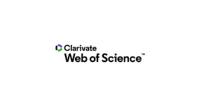EVALUATION OF CYTOTOXICITY AND EXPRESSION OF CASPASE-3 AND P53 IN HCT-116 CELLS OF LINEAGE TREATED WITH DIFFERENT EXTRACTS OF Euphorbia tirucalli L.
DOI:
https://doi.org/10.5380/avs.v21i4.41901Palavras-chave:
anticancer therapy, apoptosis, cell culture, Euphorbiaceae, immunocytochemistryResumo
Euphorbia tirucalli, a plant commonly known as aveloz, has been employed in anticancer therapy with little scientific proof. The goal of this study was to evaluate the cytotoxic potential and expression of caspase-3 and p53 in colorectal cancer cell lines treated with aveloz extracts. Hexanic and hydroalcoholic extracts were prepared in different concentrations. After 96 h, cell viability and apoptosis rate (p53 and caspase-3 expression) were verified. The hexanic extract revealed higher cytotoxicity on HCT-116 cell line at concentrations above 125 µg/mL, and hydroalcoholic extract above 500 µg/mL. LC50 for the hexanic extract was 60.2873 µg/mL, and for hydroalcoholic extract 100.6066 µg/mL. There were significant differences among the averages of cells marked with p53 at the concentrations 62.5, 250 and 500 µg/mL, as well as among the averages of caspase-3-positive cells at the concentrations 62.5, 125 and 500 µg/mL, with higher cytotoxic effect being observed for the hydroalcoholic extract. The obtained data provides evidence for the cytotoxic potential in vitro of the hydroalcoholic and hexanic extracts of aveloz on HCT-116 cell line. There was an increase in the expression of caspase-3 and p53 in the tumor line cells exposed to extracts of E. tirucalli.
Downloads
Publicado
Como Citar
Edição
Seção
Licença
Autores que publicam nesta revista concordam com os seguintes termos:
- Autores mantém os direitos autorais e concedem à revista o direito de primeira publicação, com o trabalho simultaneamente licenciado sob a Creative Commons - Atribuição 4.0 Internacional que permite o compartilhamento do trabalho com reconhecimento da autoria e publicação inicial nesta revista.
- Autores têm autorização para assumir contratos adicionais separadamente, para distribuição não-exclusiva da versão do trabalho publicada nesta revista (ex.: publicar em repositório institucional ou como capítulo de livro), com reconhecimento de autoria e publicação inicial nesta revista.
- Autores têm permissão e são estimulados a publicar e distribuir seu trabalho online (ex.: em repositórios institucionais ou na sua página pessoal) a qualquer ponto antes ou durante o processo editorial, já que isso pode gerar alterações produtivas, bem como aumentar o impacto e a citação do trabalho publicado.















